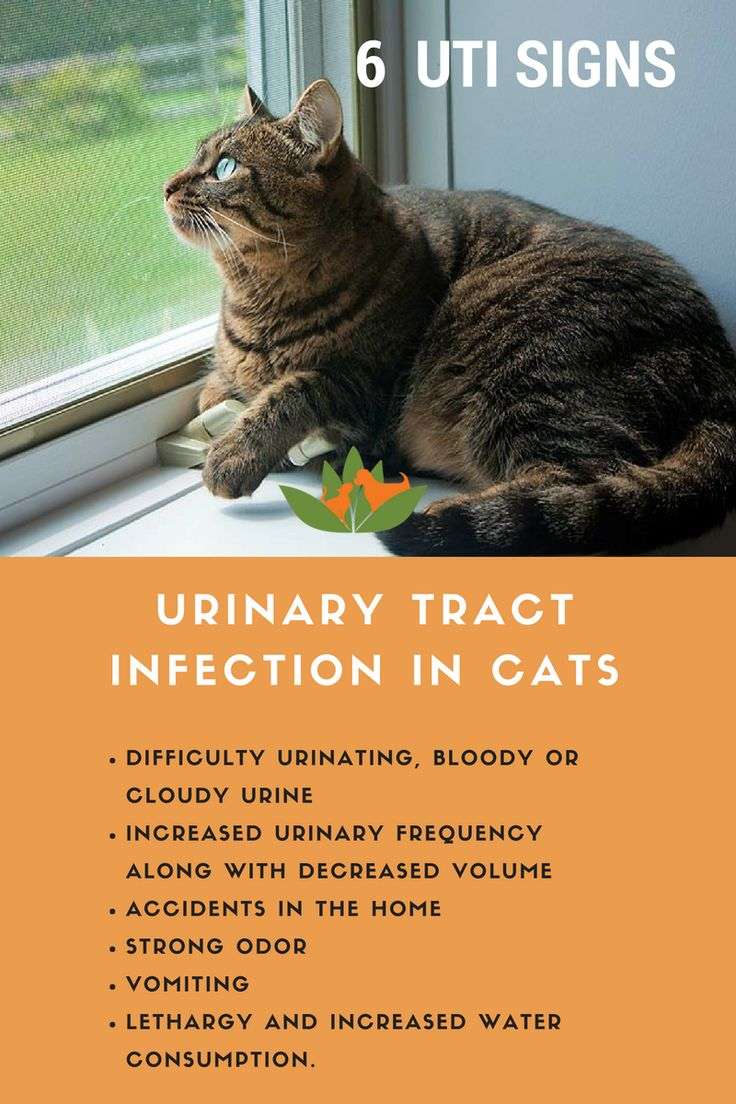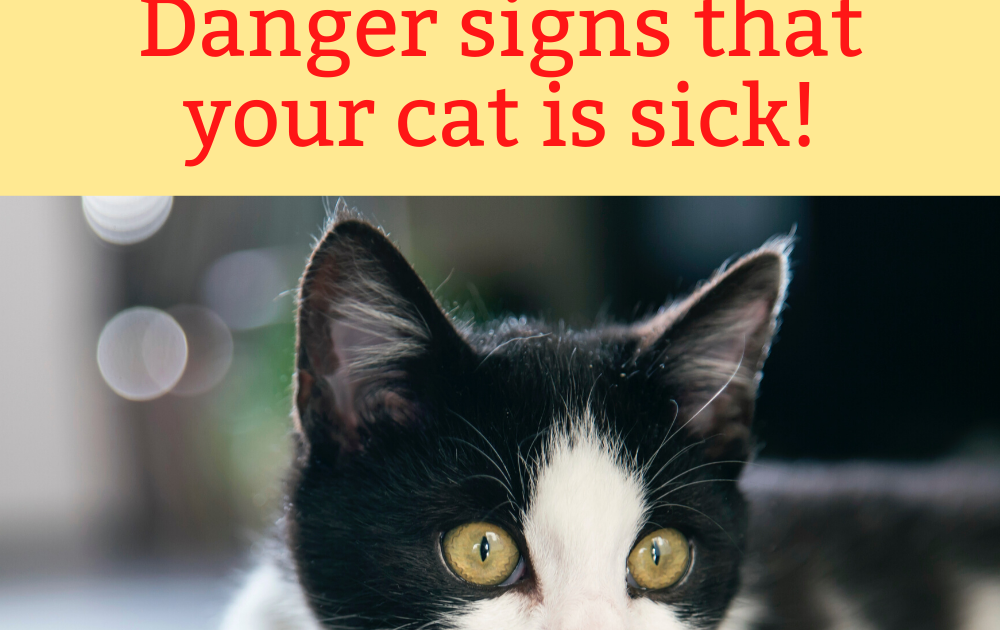Heres What Will Happen When You Visit The Vet
If a urinary tract infection is suspected in your cat, the veterinarian will perform a physical examination and will also collect a urine sample to perform a urinalysis .
Most commonly, your veterinarian will insert a sterile needle through the skin and into the bladder to collect urine . This is the best way to get a sample without risking outside bacterial contamination that could complicate interpretation of the results of the urinalysis.
For cats that will not tolerate this, another option is to put your cat into a cage with a clean litter box filled with a special non-absorptive litter and wait for him to urinate.
Depending on your cats symptoms, the vet might instead insert a sterile urinary catheter through the urethra to collect urine. Unsurprisingly, this requires heavy sedation and is usually only done if your cat is being sedated for another reason.
Your veterinarian may use a catheter and syringe to draw urine from your cats bladder.
Once the urine is collected, the vet will run tests on it, including viewing it under a microscope to look for bacteria and/or crystals. Alternatively, the veterinarian may send the urine sample off to a laboratory for testing.
A culture and sensitivity test can reveal if bacteria is present and also tell the vet exactly what type of bacteria it is and which antibiotic is most likely to be successful in treating it. This is important because different bacteria respond to different antibiotics.
Treatment For Urinary Tract Infections In Cats
If your veterinarian determines that your cat has a UTI, they’ll likely prescribe a course of antibiotics. The duration of this course can last anywhere from 1-2 weeks to as long as 3-6+ weeks, depending on the severity of the infection, the type of bacteria found on urine culture testing, and any chronic medical conditions or other risk factors your cat may have.
To give your cat the best chance of clearing their urinary tract infection, and to decrease the chances of them developing antibiotic-resistant bacteria, its critically important that you give them the antibiotics as prescribed by your veterinarian and be sure to finish the course entirely. If youre having trouble giving the antibiotics prescribed, be sure to talk to your veterinary team for tips, tricks, and other advice.
To ensure that your cats UTI has cleared, its important to have follow-up testing done on their urine as recommended by your veterinarian.
Cat Urinary Tract Problems And Infections
When your cat has a urinary tract infection, he or she will be unhappy, and it may even progress to other unfavorable situations. As a result of their urinating difficulties, cats are regularly abandoned or euthanized at animal shelters. Typically, a cat with urinary issues, such as feline lower urinary tract illness or a urinary tract infection, may have difficulty peeing and will urinate outside of their litter box on a regular basis. Having a urinary tract infection in cats may be quite unpleasant for both the cat and the cat parent.
You May Like: Which Dawn Soap Kills Fleas
What Does A Urinalysis Look At
If your cat presents to your veterinarian with urinary signs, your veterinarian will first perform a urinalysis. The urinalysis can reveal so much important information about the urine when a UTI is suspected. Your veterinarian will look for the following:
- urine-specific gravity
- pH
- ketones
- glucose
- bilirubin
- blood
- protein
Once these levels are measured, the urine specimen is placed into a centrifuge and spun down to allow cells and other debris to accumulate at the bottom of the sample tube. That debris can then be evaluated, revealing the presence of red blood cells, white blood cells, bacteria, and crystals.
What To Do If You Suspect A Flutd

If your cat is having trouble urinating and displaying other signs of FLUTD, take her to the vet as soon as possible. Your vet will give her a physical exam and collect urine samples. Blood work, x-rays, and abdominal ultrasound may also be recommended for diagnosis.
Most cases of FLUTD improve without medical treatment, but the symptoms can recur. Though they may not be life-threatening to your cat, they can be uncomfortable, so treatment can improve her overall quality of life. While treatment of FLUTD depends on the underlying cause, it is always beneficial to increase your cats water intake. Maintaining a healthy weight, feeding her canned food and encouraging her to use her litter box can also help. However, certain conditions simply cannot be treated at home. Bacterial cystitis should be treated with antibiotics, while stones must be surgically removed.
Its always best to be safe. A simple phone call to your vet when you first notice any of the above symptoms can help diagnose a problem much sooner and save your cat a longer period of discomfort. Its also important to monitor your cat after being diagnosed with FLUTD during treatment to ensure that the problem doesnt reoccur as cats are good at hiding their pain.
Recommended Reading: What Is Too Cold For Feral Cats
Feline Urinary Tract Disease
FLUTD, Feline lower urinary tract disease is actually a general term referring to a cluster of clinical symptoms. FLUTD can cause issues in your cats urethra and bladder, often leading the urethra to become obstructed, or preventing your cat’s bladder from emptying properly. These conditions can be serious or even life-threatening if left untreated.
Urinating can be difficult, painful or impossible for cats suffering from FLUTD. They may also urinate more frequently, or in inappropriate areas outside their litter box .
Treatment Usually Involves Antibiotics And Pain Relief
Treatment for a urinary tract infection in cats is generally an antibiotic and possibly anti-inflammatory medications and/or pain medications. Exactly which antibiotic is used for cat urinary tract infections depends on the type of bacteria present.
Since a urine culture and sensitivity test takes several days to run, your veterinarian may choose to start your cat on an antibiotic that is effective against the most common bacteria seen with urinary tract infections. If the urine culture shows the bacteria not sensitive to that antibiotic, your vet might switch your cats antibiotic if there has not been a good response to treatment.
Also Check: Is Blue Buffalo Good Cat Food
Symptoms Of Feline Lower Urinary Tract Disease
The most common symptom of FLUTD is your cat urinating outside the litter box . Inappropriate urination often occurs on clothes, bedding, and rugs. Some cats may choose one location, but others may urinate throughout the home.
Your cat may also make very frequent trips to the litter box but only pee small amounts at a time. Other symptoms include vocalizing while urinating and/or the presence of blood in the urine.
If you see your cat trying to use the litter box and producing no urine at all, or just a few small drops, bring them to the vet immediately. This may be a sign of the most severe FLUTD syndrome: urethral obstruction. This occurs more commonly in male cats but can occur in females as well.
Warning Signs Of Feline Urinary Tract Infections
- Straining to urinate: Feline idiopathic cystitis can lead to straining while urinating, and can eventually lead to more severe situations such as the formation of bladder stones or a urethral plug. Male cats are more at risk to develop a urethral plug this is a life-threatening condition that causes a cat to lose the ability to urinate.
- Frequent attempts to urinate: Cats with FLUTD have a frequent urge to urinate, but can only pass a small amount each time.
- Painful urination: If your cat cries out while urinating, this is a tell-tale sign that she may be in pain.
- Blood in urine
- Licking the genital or abdominal areas: This is a way for cats to soothe the pain of a urinary tract disease.
- Irritability
- Urinating Outside the Litter Box: Take note if your cat is urinating in places other than litter box, especially on cool surfaces like tile or a bathtub.
You May Like: My Cat Is Twitching And Shaking
General Signs Of Malaise
Cats that have a UTI and that have received no treatment for it are going to be slightly more withdrawn than usual.
They might sleep more if they develop a fever, and they will also prefer cold surfaces such as the porcelain or marble tiles you might have in the kitchen or bathroom. Theyll rest their bellies on the cold floor in an attempt to decrease the higher temperature they have in that body region.
Best Food For Cats With Urinary Infection
The best type of food when dealing with cats urinary infection is a fresh, raw meat diet. Remove all dried food, as this is one of the major causative factors in urinary problems in felines. Raw meat contains lots of liquid as well, and the more liquid passes through your cats system, the quicker the cleaning and healing process will be.
If you need information on this, please read this article: Feeding raw food to cats
Make sure you keep your eye out for any urinary infection symptoms in your cat, especially if you are feeding dry food. And if you notice any signs, get professional advice immediately. Time may be of the essence!
Read Also: What Does It Mean When Your Cat Licks Your Nose
Cystitis And Lower Urinary Tract Disease In Cats
Cystitis is a general term referring to inflammation in the urinary bladder. The term cystitis does not imply a specific underlying cause. In cats, diseases of the lower urinary tract are often grouped under the term feline lower urinary tract disease . The initial diagnosis of FLUTD is based on the identification of signs of lower urinary tract inflammation.
How Can I Help My Cat Pee

Bringing your cat to a vet is the single most reliable way to get your cat unblocked and able to pee again. Veterinarians have the tools and know-how to physically clear the blockage and get your cat back on the path to recovery.
A simple procedure could save your cats life. Anything else is a dangerous waste of time.
Also Check: What Does It Mean If A Cat Hisses At You
Can Both Male And Female Cats Get Urinary Tract Infections
Both male and female cats can get urinary tract infections, but they tend to be more common in females than in males. However, UTIs in male cats can become serious very quickly, so its important to consult your veterinarian immediately if you notice any symptoms, regardless of whether your cat is male or female.
Difficult And Frequent Urination
UTIs can have several different causes. Sometimes, they can be caused by a typical bacterial infection as a result of you not being able to change your pets litter frequently.
Other times, a UTI can be a secondary symptom of bladder stones. Sharp stones can irritate the mucous membrane on the inside of the urinary bladder and therefore cause an opening for the bacteria that are otherwise normally present in the cats urine.
All cats that have a UTI have a difficult time peeing normally. Some cats can be in pain and cry while using the litter box. Others can go and try to use the litter box several times over the span of an hour or two, which should give you a clue that something is wrong.
Since cats dont drink a lot of water in general, they shouldnt pee more than 2 or 3 times a day. If you see an increase in the frequency of urination, go to an animal hospital or see your vet, as some UTIs can be life-threatening.
Read Also: How Many Calories Should My Cat Eat A Day
Are There Any Home Remedies For Cat Utis
Unfortunately, there is no good way to treat your cats UTI at home. Particularly in this instance, where medical issues can quickly lead to behavioral issues like peeing outside of the box, its important to get your cat to the veterinarian as soon as possible to determine the cause and treatment.
True infections are actually much less common than sterile inflammatory episodes, and these are treated very differently. Additionally, UTIs in male cats can sometimes lead to urinary obstruction, a life-threatening emergency. To avoid costly treatments and frustrating behaviors from developing, seeking veterinary care promptly is ideal.
Inflammation Of The Bladder
Commonly referred to as a urinary tract infection, this problem in cats is more properly called idiopathic cystitis in veterinary terminology. Cystitis just means inflammation of the bladder, while idiopathic means the problem arises spontaneously and without a known cause.
Inflammation is a useful aspect of the bodys immune response, serving to increase blood flow to an injured or infected area to facilitate healing. In the case of cats with urinary tract disease, however, sensory neurons trigger the inflammation of the bladder not because of infection or injury but in response to stress.
Recommended Reading: How Many Calories Should My Cat Eat Per Day
Frequent Attempts To Urinate
Cats suffering from urinary tract illness frequently pee an excessive number of times per day because little to no urine is being emptied at each urination.
Cats are unable to eliminate body harmful waste materials through their urine, which is clearly highly annoying and very hazardous for them when this occurs.
Important Information On Flutd & Urinary Tract Infections In Cats
tags
Feelings of fear and anxiety can affect our cats much like they affect us. Stress can occur in your cat for multiple reasons. Perhaps youve recently moved or brought a new pet or family member home. Whatever the case may be, if you have a stressed cat, there could be an underlying problem. One of the first ways to detect this problem is when your cat stops using her litter box. She may be peeing in a new spot, spraying on a wall, or having trouble urinating.
Unfortunately, inappropriate urination is one of the most common reasons why cats are left at shelters or put outdoors. If your cat starts marking her territory away from her litter box, its not out of revenge or spite its probably because something is wrong. While it could be a behavioral problem, or she doesnt like her litter box for some reason, a medical condition should first be ruled out. One of the most frequent medical causes of a urination problem is feline lower urinary tract disease.
Recommended Reading: Pass Emissions Without Catalytic Converter
Why Is My Cat Going To The Litter Box Every Few Minutes
Cats with urinary tract infections or other forms of urinary tract disease spend a lot of time going in and out of the litter box. It might look like your cat is constipated, but if you watch closely, youll notice that theres not a lot of moisture in the box.
Frequent trips to the litter box indicate that your cat needs relief. If your cat keeps trying to pee but only a little comes out, its a sure sign that something is wrong. Bring him or her to the veterinarian as soon as possible.
If your cat keeps going to the litter box but nothing happens at all, he or she may be dealing with a complete urethral blockage. In this case, seek emergency veterinary care immediately. Just a few hours of hesitation could be fatal.
Symptoms Of A Urinary Tract Infection In A Cat:

- Excessive grooming or licking of the genital or abdominal areas
- Frequent attempts to urinate, including multiple trips to the litter box
- Urinating in unusual places outside of the litter box, especially on a cool surface like tile or the bathtub
- Vomiting
- Absence of large clumps in the litter box
- Straining to urinate or crying out while urinating
- Discolored urine or blood in urine
The most common symptom is when the cat is no longer going to the bathroom in their litter box. Do not assume this is a behavior issue. Take your feline companion to the vet to rule out a urinary tract infection or other serious problem.
Don’t Miss: Kitten Clothes Diy
Symptoms Diagnosis And Treatment
Common signs of a cat with a urinary tract infection are:
- Persistent straining in the litter box
- More frequent trips to urinate, but urine often limited to just a few drops
- Inappropriate urination in other areas
- Crying while straining
- Licking the genital area
- Bloody urine
A urinary tract infection in a female cat may seem like a minor issue, though annoying and needing treatment. But in male cats, a urinary tract problem can easily become life-threatening due to the narrowness of their urethra, which can easily become blocked. A urinary blockage can turn out to be deadly if veterinary attention is not sought immediately. A cat with a urinary blockage will produce no urine and become poisoned by a buildup of toxins.
Vomiting, nausea, lethargy, and loss of appetite in a male cat should never be ignored. A male cat urinating a few drops is slightly better off than one not producing any urine at all, but still requires immediate intervention.